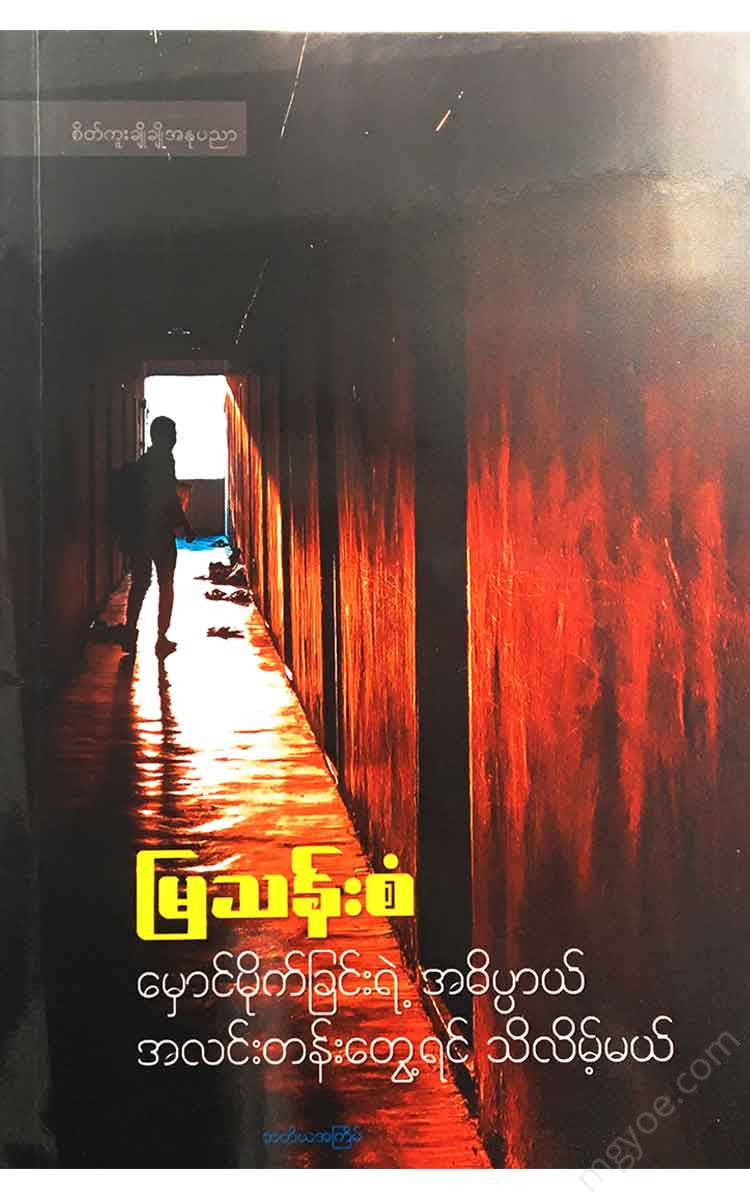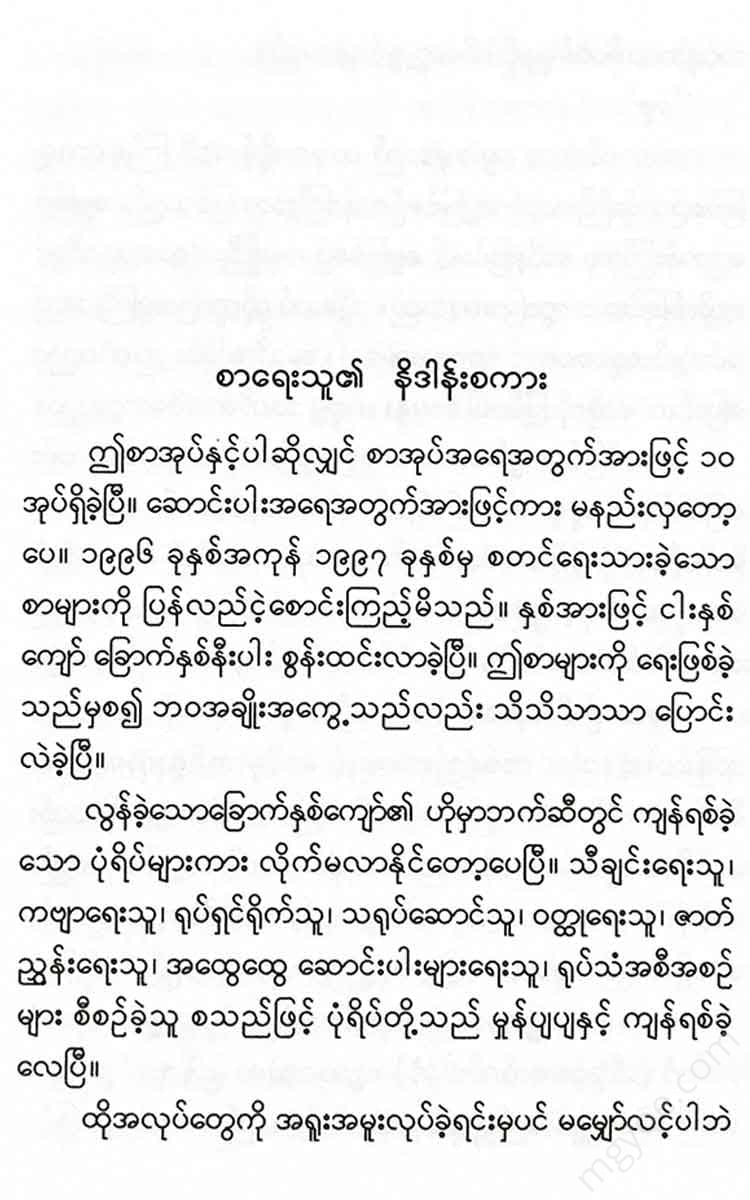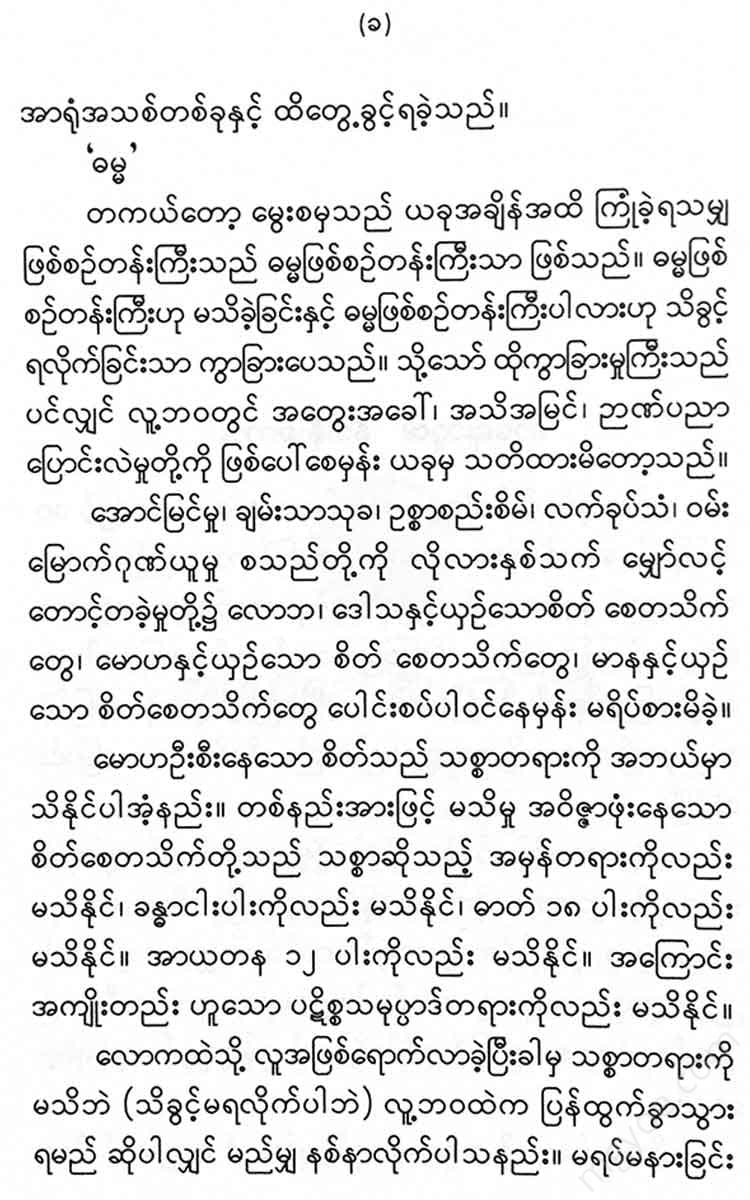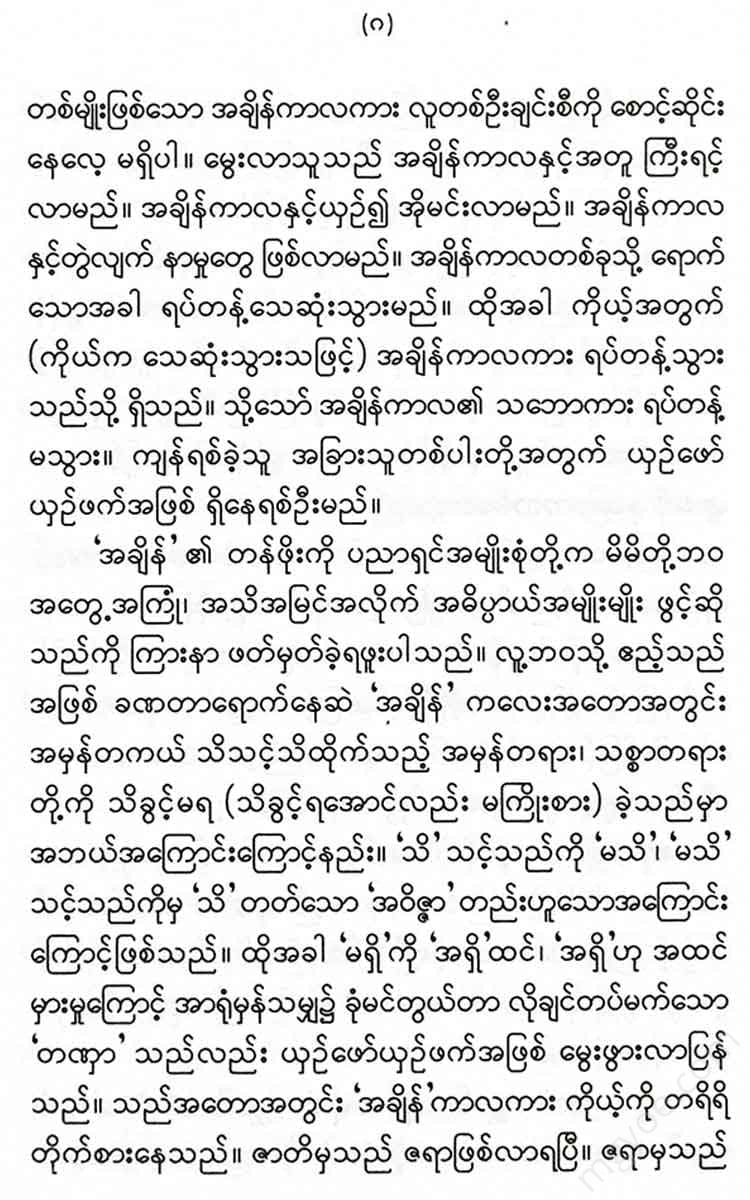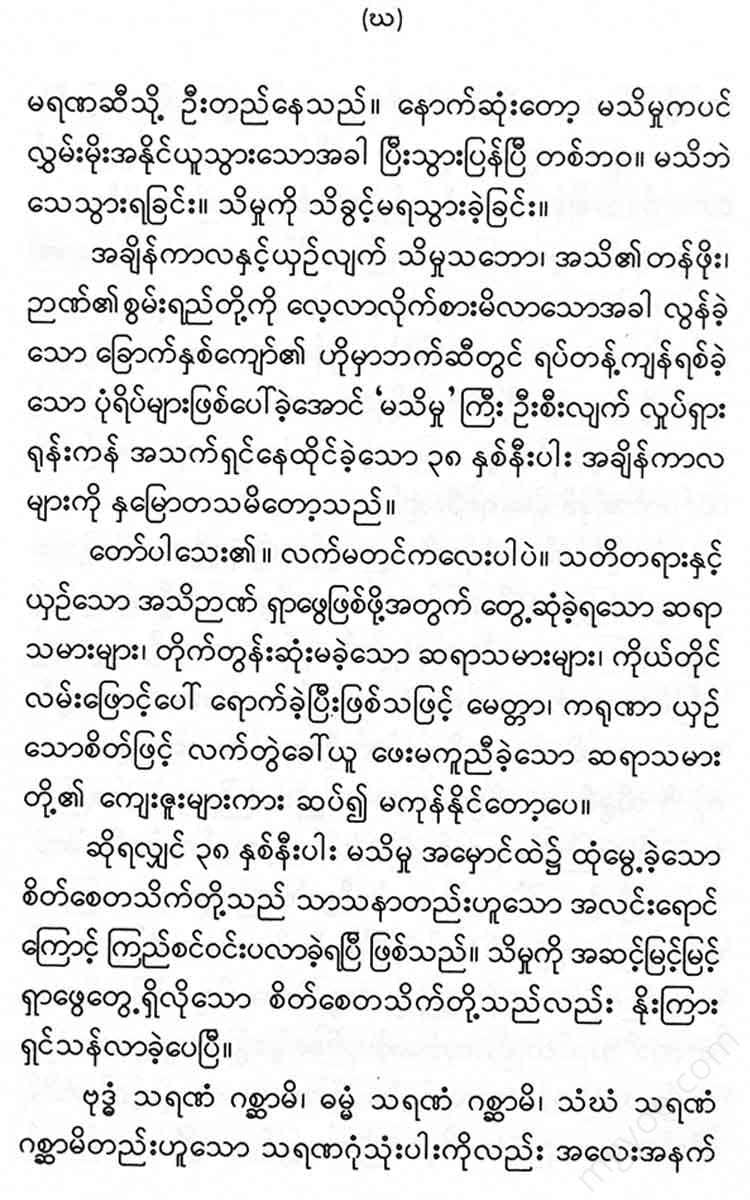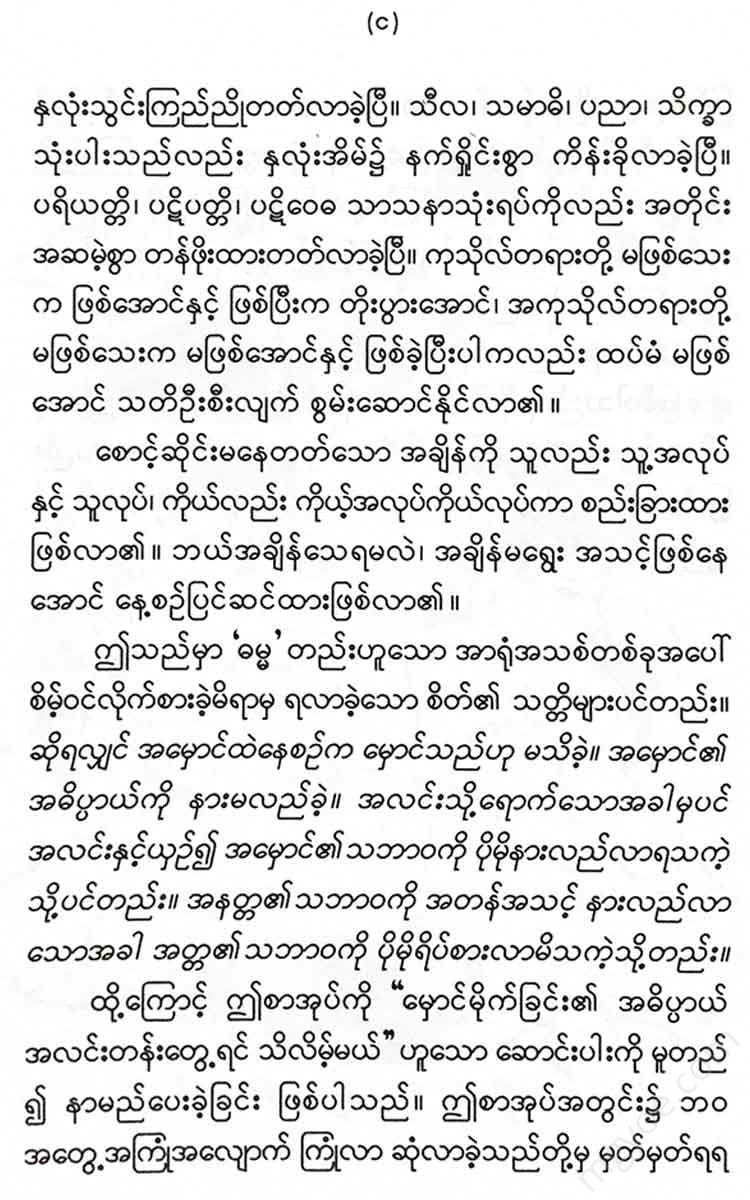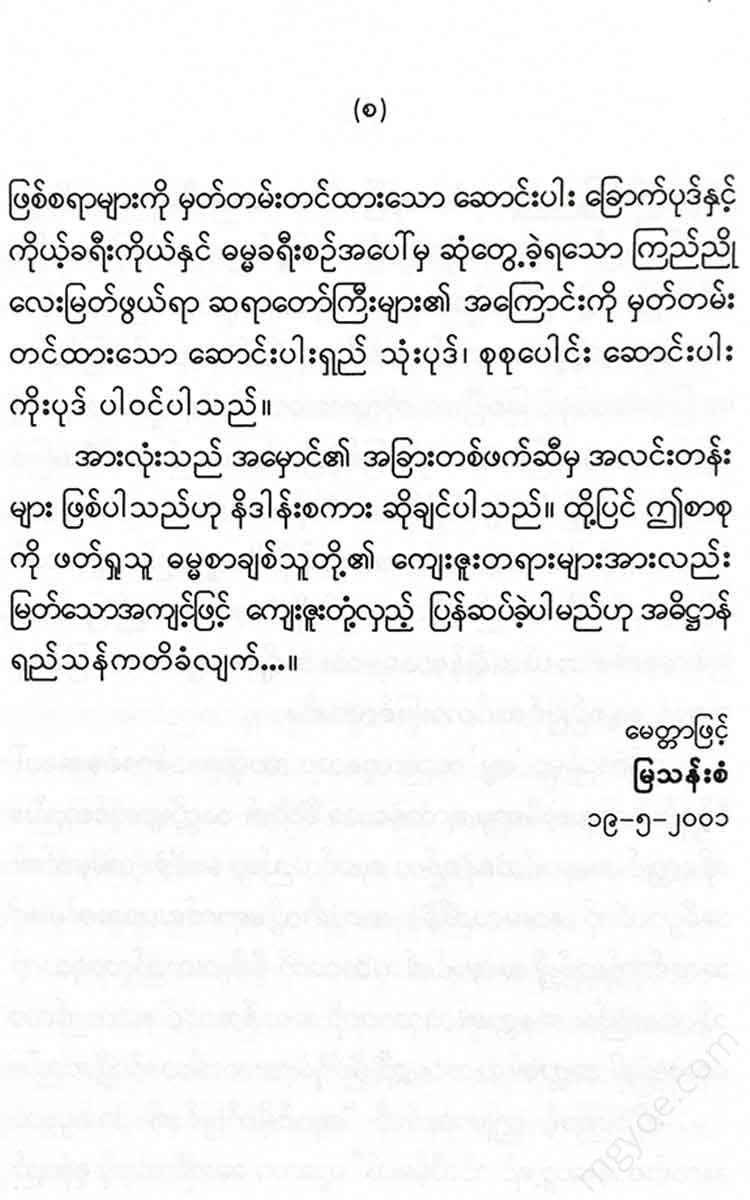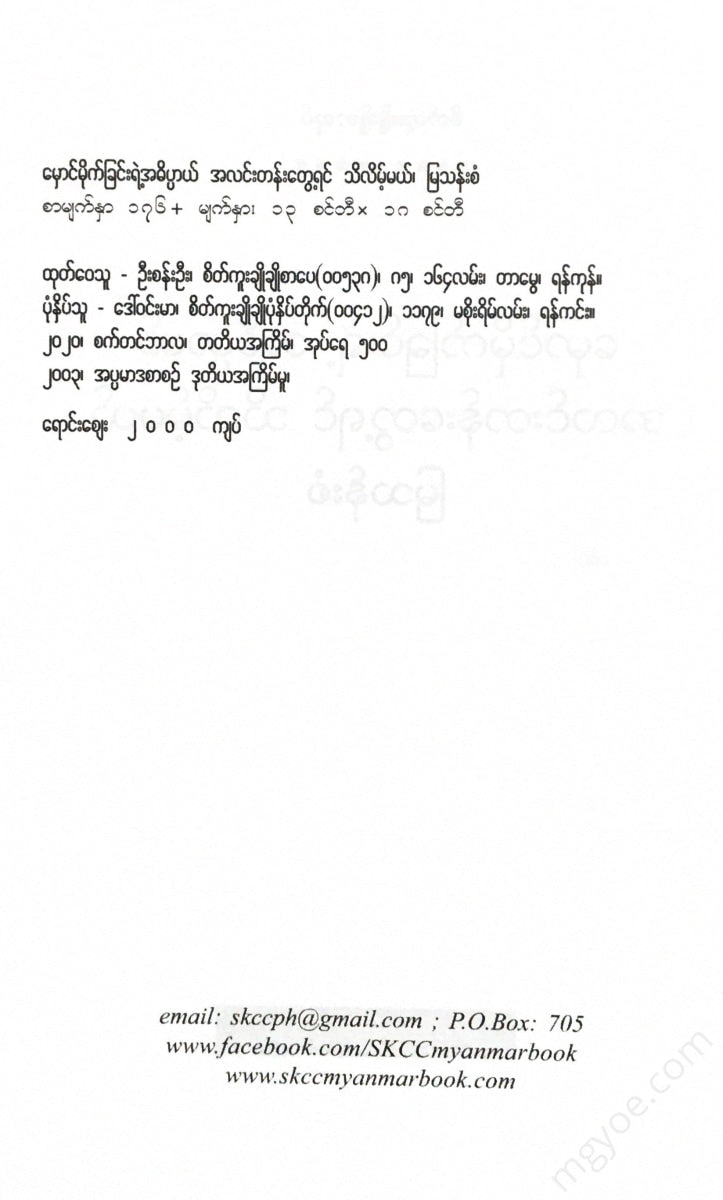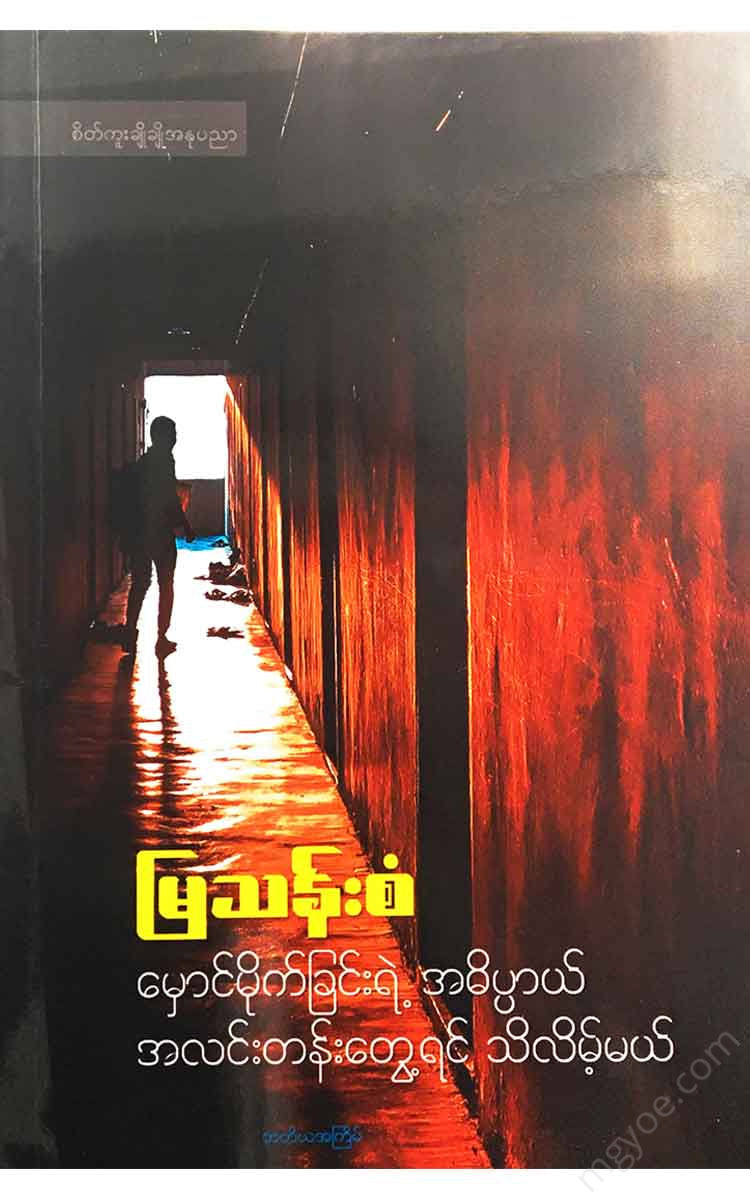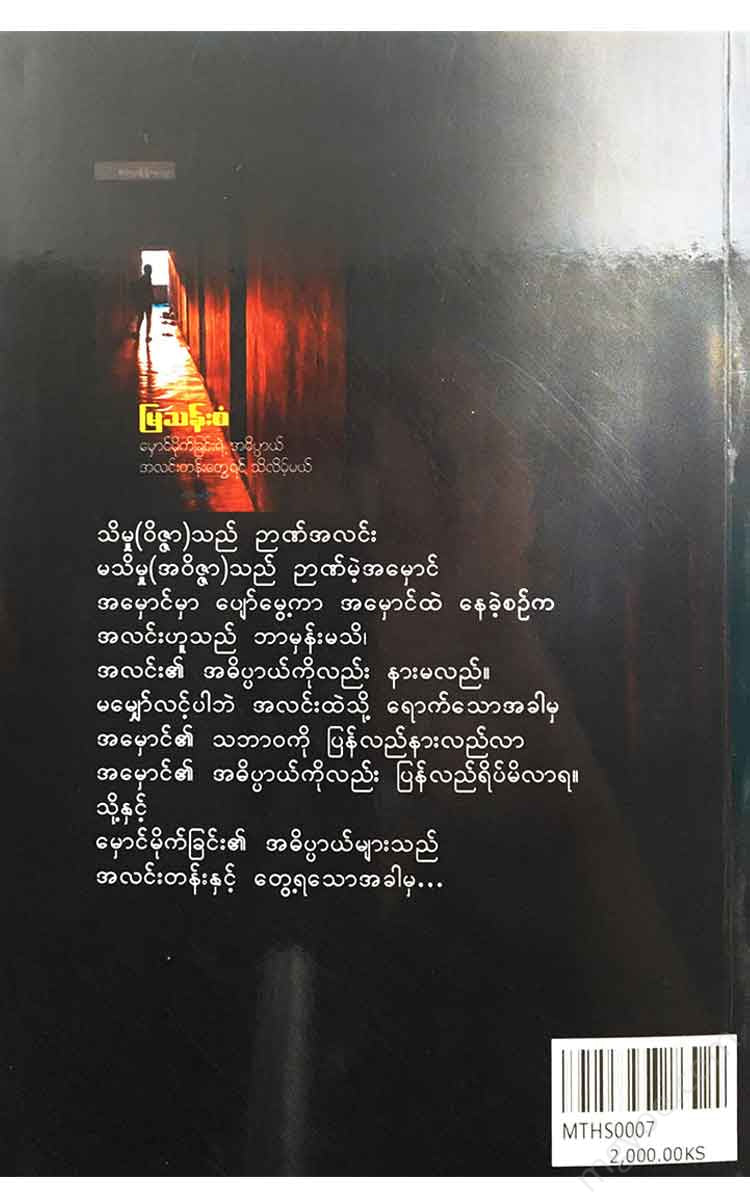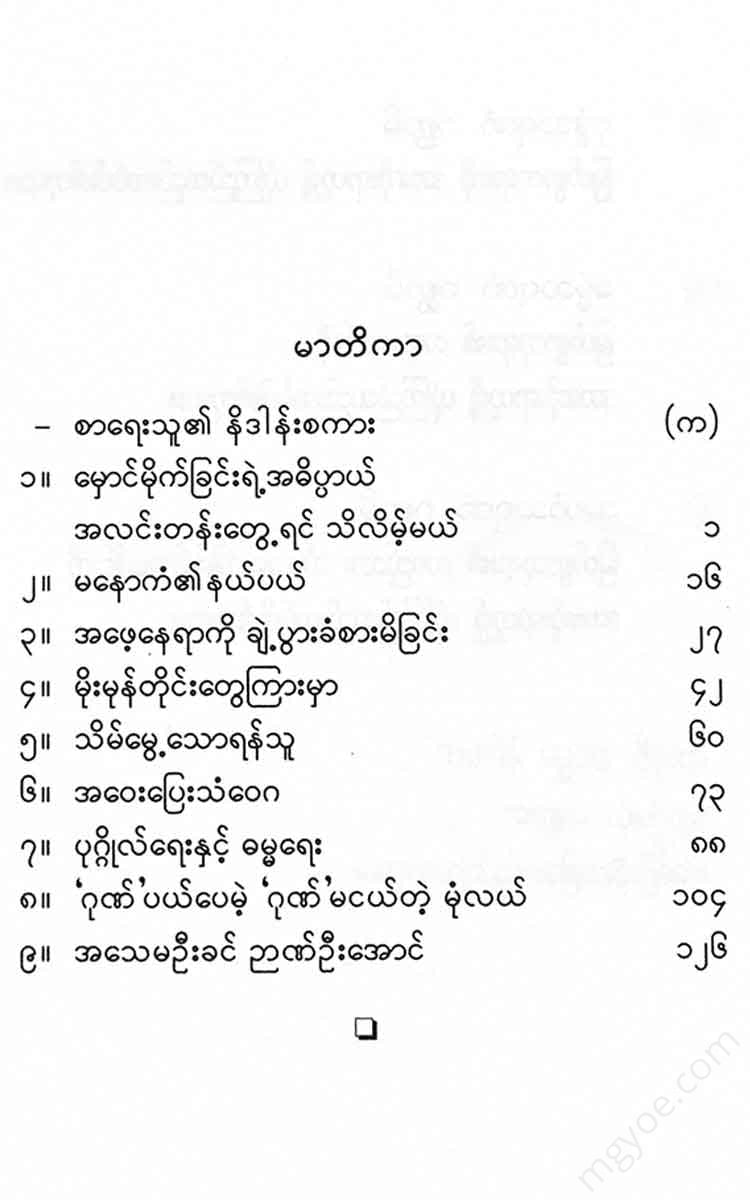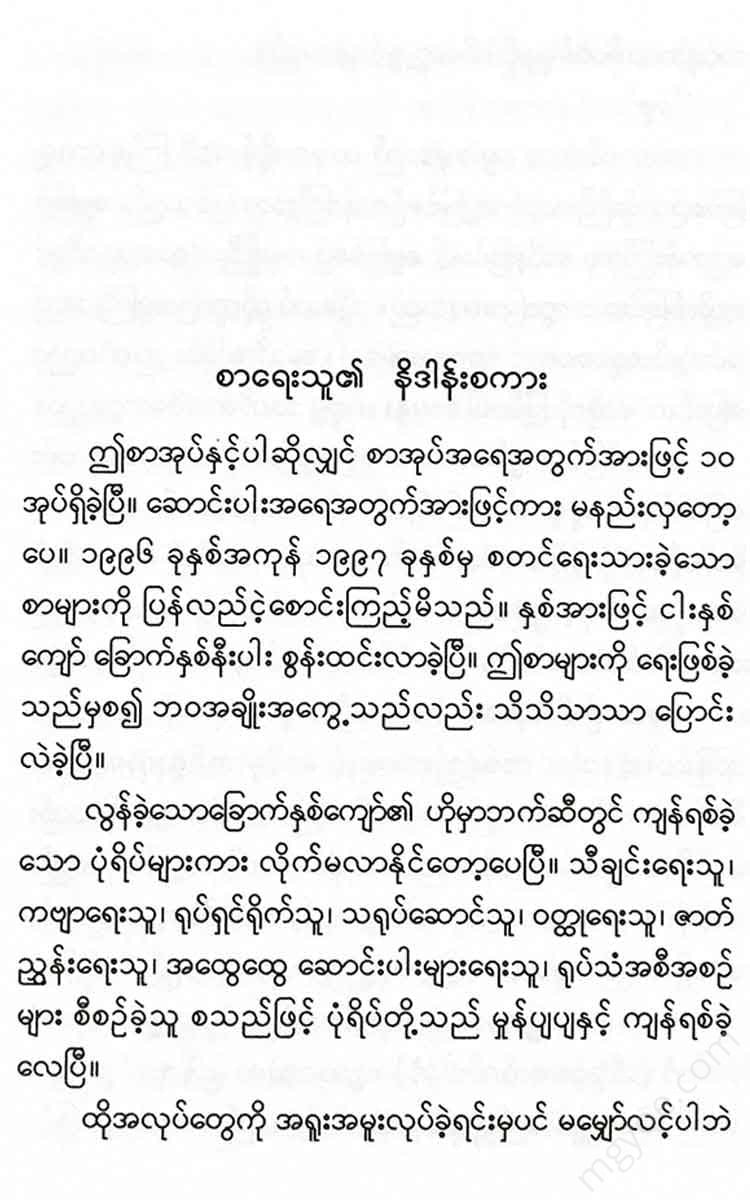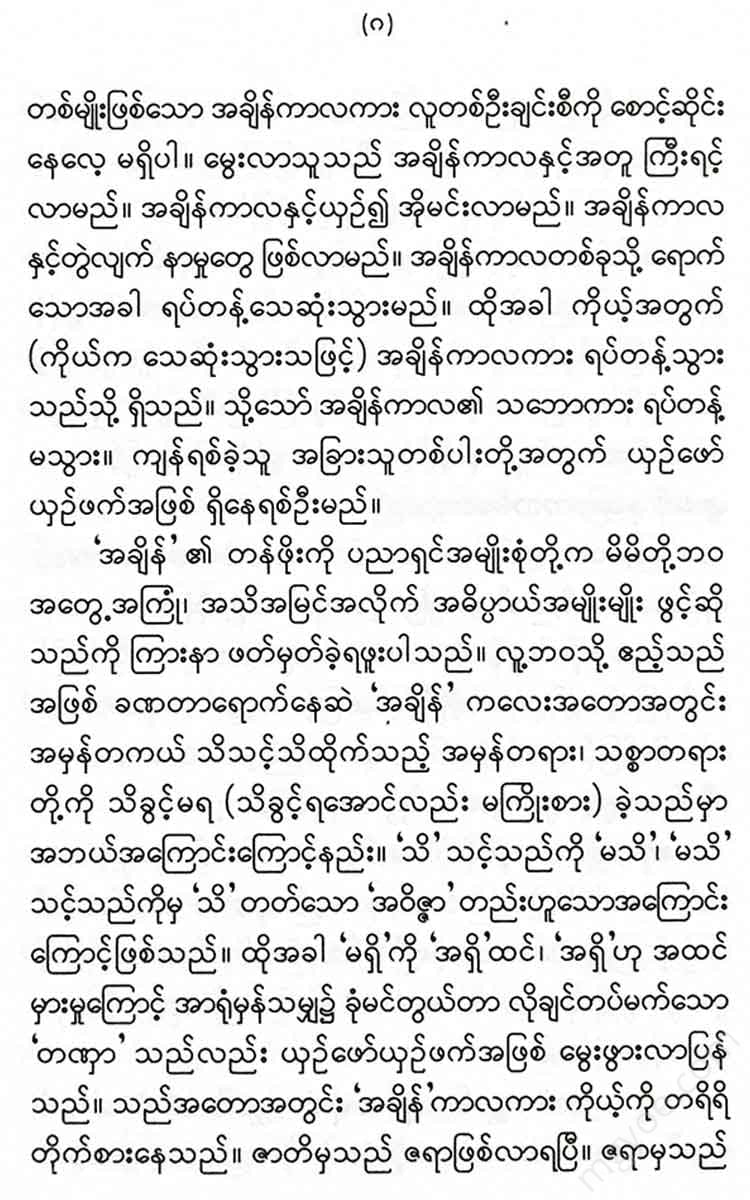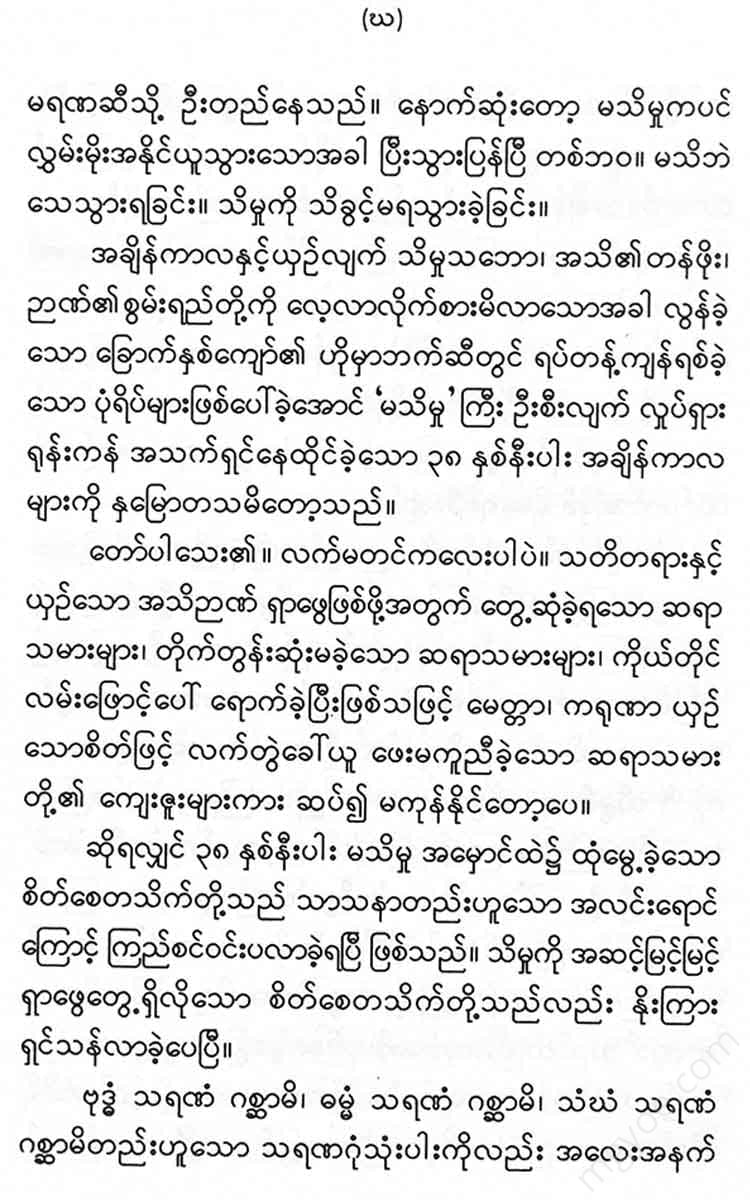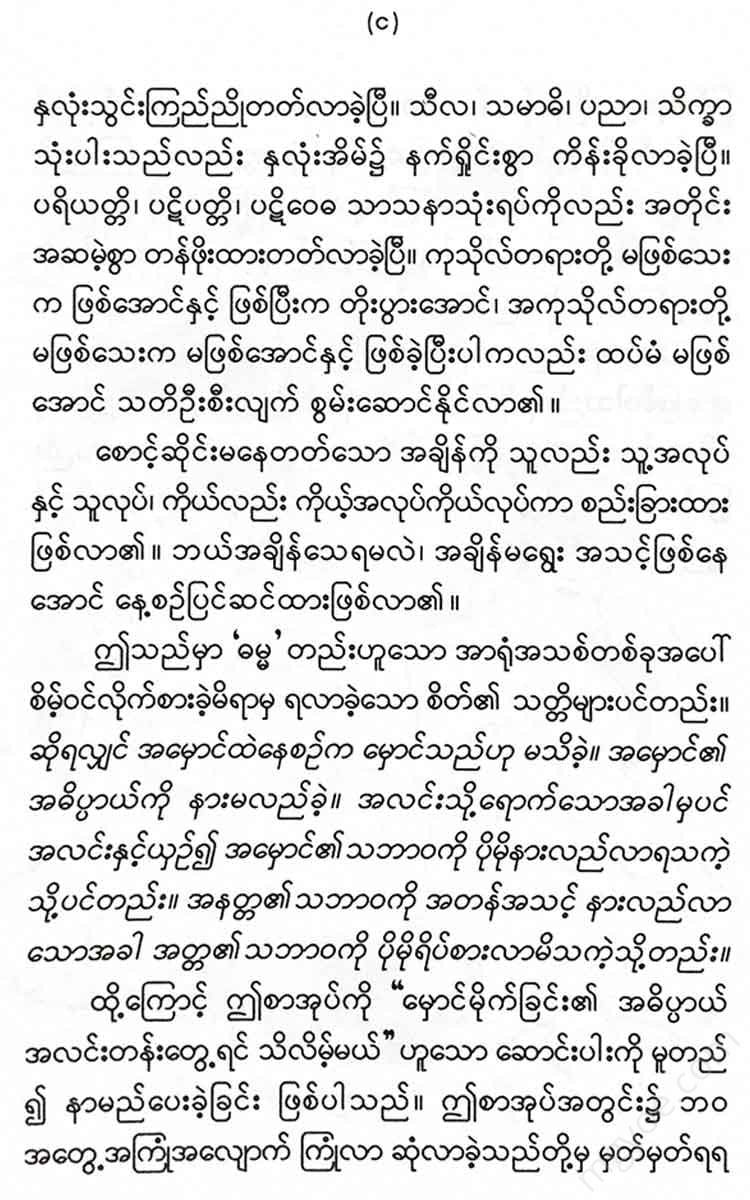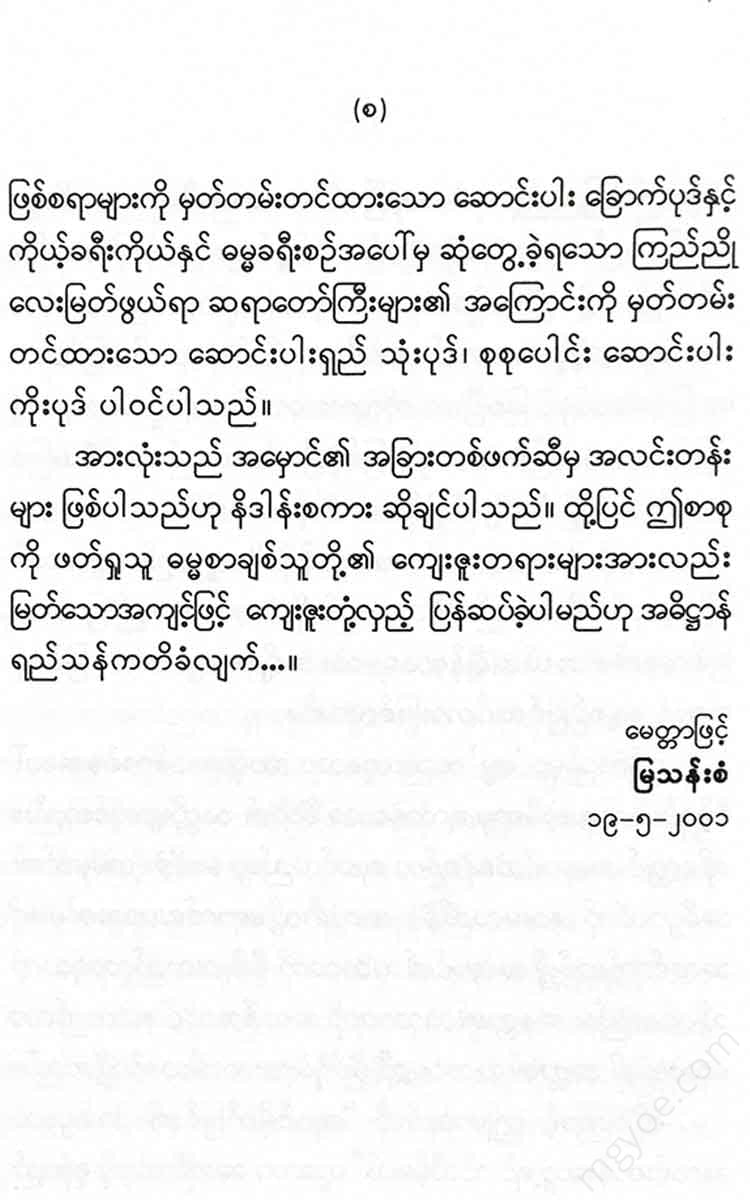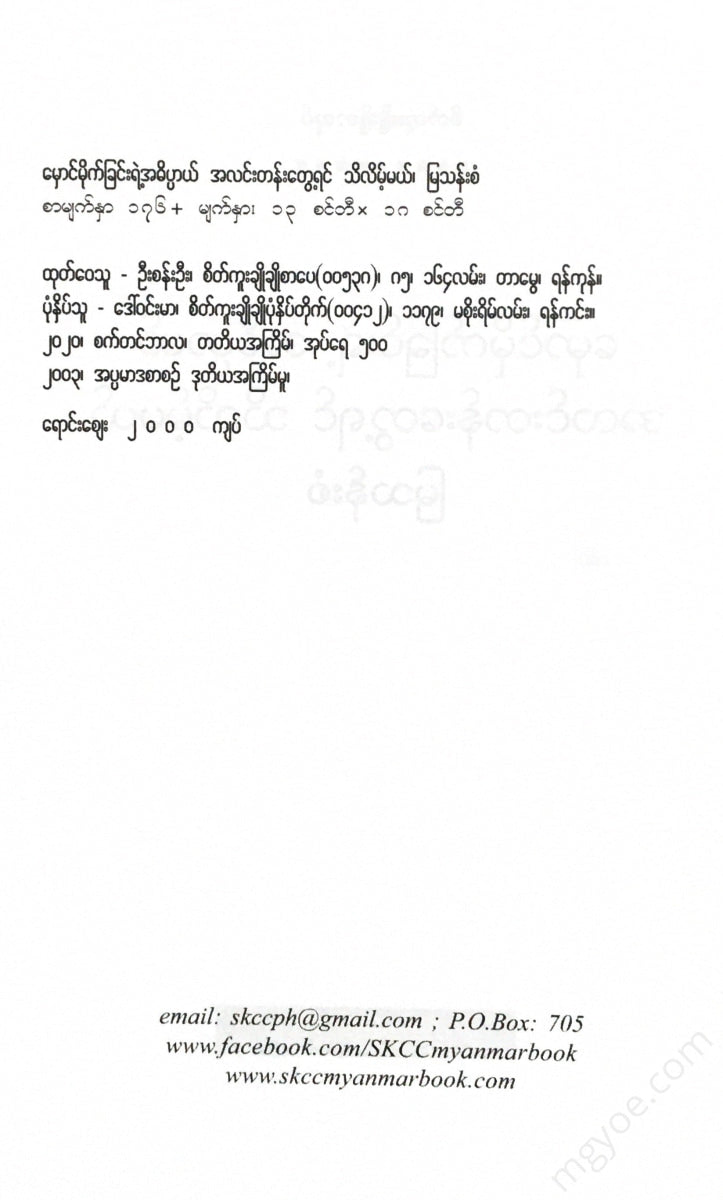စိတ်ကူးချိုချိုစာပေ
Mya Than San - You will know the meaning of darkness when you see the light.
Mya Than San - You will know the meaning of darkness when you see the light.
Couldn't load pickup availability
, 2,
" Knowledge" is the light of the mind. "Ignorance" is the darkness of ignorance. When people live under the shadow of the "darkness of ignorance", they do not have the ability to understand the meaning of light, the light of "knowledge". When they unexpectedly come into the light and understand the meaning of the light of the mind...
The meaning of darkness
You will know when you see the light.
(1)
In fact, the title of the article is a piece of lyrics or a phrase from one of his songs. Why did he choose that piece of lyrics or phrase to write an article about? There is a reason.
When he wrote that song, he used the word “darkness” to represent separate areas and opposing groups. So, what about the word “light”? He chose to use it to represent the courage of those who are steadfast in their right and noble deeds. Now, in the “garden of peace” where darkness and light are no longer limited, the brothers who have made history are now reaching out and enjoying closeness, so it can be said that his writing has also come to an end.
So why is it used again? The answer is yes. This time, he meant to use it to mean the darkness and light of an individual, not related to groups or organizations.
"Knowledge" or "wisdom" is the light of enlightenment.
"Ignorance" is the darkness of ignorance.
When people lived under the shadow of the "darkness of ignorance," they were unable to understand the meaning of "intelligence," which is light and a ray of light.
(However, if there is intelligence in that unexpectation, the word "light" is chosen as a word to represent the good intentions of those who are brave and steadfast in their right and noble actions. Now, in the "garden of peace" where darkness and light are no longer limited, the brothers who gave history have reached out and enjoyed close friendship, and it can be said that his writing has also been nullified.)
So why is it used again? The answer is yes. This time, he meant to use it to mean the darkness and light of an individual, not related to groups or organizations.
"Knowledge" is the "light of the mind".
"Ignorance" is the darkness of ignorance.
When people lived under the shadow of the "darkness of ignorance," they were unable to understand the meaning of "intelligence," which is light and a ray of light.
Unexpectedly (but in that unexpectedness there is a childish desire to seek enlightenment) I came into the light and understood the meaning of enlightenment, and only then did I understand the meaning of darkness, the nature of darkness, and the shadow of darkness I had lived in.
And so, I would like to take an incident from the many parts of his life to prove that the meanings of darkness are better understood when they are met with light.
( 2 )
The small car he was driving turned down from Kabar Aye Pagoda Road onto Gandama Road. The traffic on the road was starting to thin out. Many of the doors were already closed. It was only 11 p.m.
After crossing the circular railway, the surroundings became noticeably quieter. There were no residential buildings. On the left side of the road was the swimming pool, on the right was the Okkalapa Golf Course. He drove slowly along the winding asphalt road. Although there were no people, he did not dare to speed up. The road was winding, with many bumps and valleys, so he had to drive carefully. When he reached the end of the golf course, he turned to the right. Suddenly, a voice came from the silent car. The voice of his young son.
"Mom, I don't know what's going on in my mind. I want to cry when I hear your voice."
He smiled as he drove. His son was a talkative man. He thought he was going to say something to please the adults. However, he noticed that his son's voice was a little shaky. The mother smiled and comforted him as she spoke to him.
"You're going to do it too, I don't know what else to do."
"No, Mom, I don't know what's going on in my mind. I just feel like crying."
He could hear the mother and son talking as they drove. The son's proposal had become something to think about. The car was still moving slowly in the darkness.
That day marked the eleventh night that their family had attended the night sermon without fail. In fact, that night was the night when the sermon would end. However, the momentum of the sermon was still good, so at the request of the disciples, they were going to extend it for three more nights. (The sermon was held at Kan Myint Monastery in Sanchaung Township.)
The preacher who gave the sermon was the Aung San Tat Kyaung Sayadaw, Maha Kammatthanasariya Bhaddanta Saddhammakittisara.
Having received the teachings of Venerable Mogok Sayadaw, he explained the entire discourse on the path of conflict in a circular manner, explaining it in detail and explaining it in detail.
The vast, vast circle of the cycle of existence is infinite, the things to know and remember are infinite. The things to study are infinite. The things to acquire are millions and millions.
Every time I hear it one day, I can't help but hear it the next day. And when I hear it the next day,
They wanted to continue listening for another day. Day after day, their curiosity grew stronger. Their desire to respect and listen to the Dhamma grew stronger. When they did not attend the Dhamma class or listen to it, their family would only look at the large circles that were seen all over Myanmar with incomprehension.
In other words, their family was afraid of the big circle. They did not dare to approach the circle because they were afraid of not being able to understand it. In other words, the big circle was like a foreign object to them. The large group of words called the doctrine of the conflict threatened them. Thus, they had seen it but did not know its meaning, so they became complete strangers.
Now that is not the case. Thanks to the loving guidance of Aung San Sayadaw, their entire family has been able to approach the circle with courage. The circle has become intimate with them. They have also come to understand the meanings of the words in the circle to some extent. In fact, the words with meanings in the circle are organized to make it easy to understand their physical processes. In fact, the circle is a word picture that represents their physical bodies...
When I understood the cause and effect processes in the circular sermon that the monk drew me to, some of the ideas I had unconsciously held on to through misconceptions, superstitions, and false knowledge were shattered.
They learn to find some mistakes in what they believed in through words and through words. All that they thought they had learned through words and through words is now in vain. They imagine how their lives were lost in the mouths of others, who had no knowledge of their own, and had not yet become their own Dharma. Isn't it easy? .
Now, even my little son has memorized the short poem on the Patissamuppada sermon that the monk preached and recited...
“Where is ignorance, in my mind, sometimes I do foolish thoughts. When I do thoughts, I close the door of the house of consciousness, the six-sided glass door is well-fitted. When the six senses meet, the six senses that appear on the six spiritual bodies are well-felt, and I feel, and then I want to get attached to the path of attachment. Because of the path of attachment, I have karma and karma. When I do karma, I call the new name form on the name form, and on the name form, I have a head that is very old and dead.” I also remembered the grace of the original Lankan monk, Sayadaw U Ghosita (the one-life monk). The young son looked at the small paper distributed as a gift and recited it repeatedly on the bus to and from the sermon, and within two days he was able to forget. While the Sayadaw was preaching, the young son sat between his mother and father and answered everything the Sayadaw asked, echoing the elders behind him. The meditation class, which was delivered by the Venerable Mogok Sayadaw with a question and answer session, was not easy to get lost in. The entire session was filled with questions and answers. The younger son also pretended to be bored and waited for the teacher's question, thinking that he would go back and walk outside. After the session, when he found a solution through the work of the body and mind, the younger son sat down with the elders. At home, he used to sit for 10 minutes every day, so sitting in meditation was not strange to him. He had become accustomed to it. Sitting with the audience for more than the usual time would be somewhat difficult for the younger son. However, the couple did not care about the younger son's difficulties. Since they had to keep up with the teacher's teachings, they had to do their own work, and the younger son had to do his own work.
After the sermon, he happily and cheerfully carried out the chores of collecting the mats from the Dhamma hall. In this way, over the course of eleven days, the young man listened to the Dhamma, understood and answered questions, did the chores, and recited the Patissamuppada Linka repeatedly on the car. Depending on the environment and the sensory experience, the young man's inner mind must have changed somewhat. The waves of Dhamma that had entered the young man's heart without him knowing it must have softened his heart somewhat. He wondered if this was why the young man had truly become attached to the Dhamma.
He parked the car in front of the house. He opened the gate and drove it into the garage. He closed the garage door and went inside the house. When he reached the living room, his son was crying. He suddenly couldn't think. So he picked up his son. He had to comfort him.
"Why are you crying, son?"
